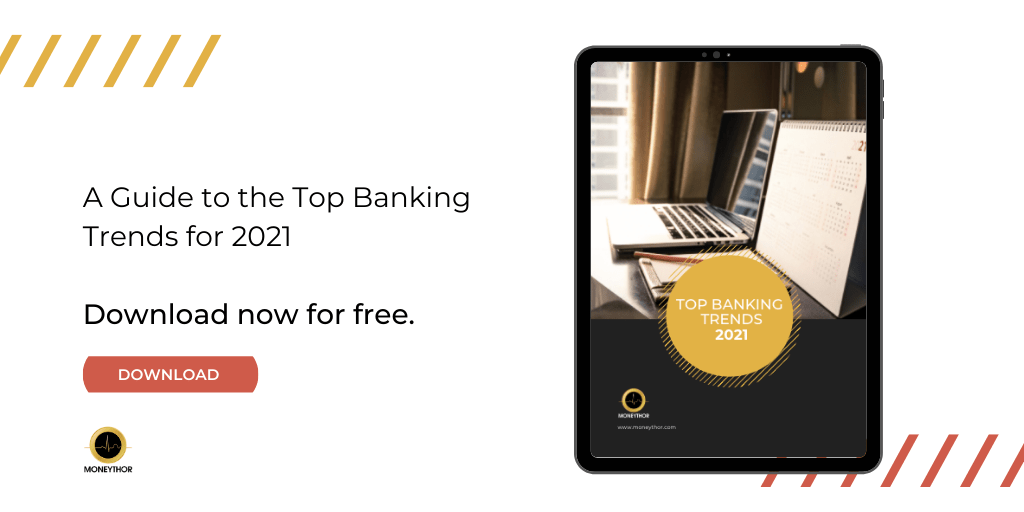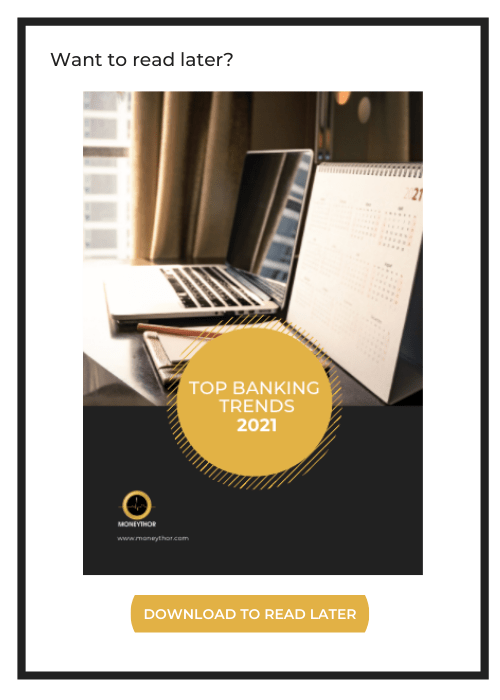When we put together our trends report for 2020, we focused mainly on technological innovation and adoption, and financial service regulatory development. We predicted the continued growth and increased use of technologies such as AI, data analytics and cloud computing and looked forward to the delivery of regulations around Open Banking and new bank licensing. We could not have predicted the immense impact that Covid-19 would have on our lives and as a knock-on effect the impact it would have on how we bank. While predicted technological innovation continued as did the progress around financial service regulation, other key trends emerged in banking over the last 12 months.
- Changing Consumer Behaviours
Covid-19 has forced people to change their lifestyle habits and fundamentally how they live their lives. The reduction in face-to-face interactions and the increased use of online services has transformed how people interact, spend their money and use their time.
Before the pandemic, consumer expectations were changing, and banks were innovating the way they delivered their products and services. However, this year we have witnessed fundamental shifts in how people are choosing to bank, and so there has been a need to remodel traditional banking systems to fit into the “new normal” and meet customers current needs and expectations.
- Accelerated Digital Transformation
In many ways the Covid-19 pandemic has become a catalyst for change for financial institutions. Traditional financial channels, products and services have been turned on their heads. Use of cash, which has been in decline for sometime, has been dramatically reduced. Lockdowns and stores being shut have lead to a massive increase in e-commerce payments and as millions of people grapple with the financial toll of this pandemic, an increased need for digital financial management tools has emerged.
Most banks would have begun their digital transformation journey pre-Covid, however the pandemic has forced many to fast-forward their plans and pivot to digital in record time.
- SME Banking in the Spotlight
Many business sectors have been severely challenged by the pandemic, in particular, SME businesses have been hit hard by long lockdowns with many closing down at a rapid pace. There is an unprecedented demand for business loans and financing. Governments around the world have provided support packages to get SMEs through this difficult time. But it is the responsibility of the banks to deliver this financing to businesses. For banks it has been a challenge to make credit available quickly, while still performing the required checks and balances.
Asides from lending and financing, online supports for SMEs businesses have been made available by banks. Examples include emergency planning and forecasting tools, educational content on financial supports available and access to fully digital advice and support teams.
The SME market, which has traditionally been underserved by banks, is at an inflection point – 50% are expected to close due to impact of the pandemic – and banks have been pushed to act quickly to protect this sector which is the backbone of all major economies, accounting for 90% of businesses and 50% of employment worldwide.
Table of Contents
1. Digital Transformation Becomes Mainstream
2. Open Banking to Open Finance
3. Cash is Finally Dethroned
4. Cloud Reaches New Limits
5. Sustainability in Focus
1. Digital Transformation Becomes Mainstream
In a year that demanded a shift for all businesses to become more innovative and tech-driven, Covid-19 was the catalyst that sped up the digital transformation journeys of many incumbent financial institutions. Looking into 2021 financial institutions are expected to continue on this trend of digital disruption and innovation.
What to expect?
Financial institutions will be looking for simplified ways of carrying out business activities to keep up with customer expectations, to rebuild themselves as leaner and more agile businesses and to cut costs. This means transforming every area of the business not just the customer-facing digital channels and building a culture motivated by new technology. Some key ways banks will transform include:
- Automated Processes
Incumbents will adopt emerging technologies such as AI to facilitate the automation of processes to simplify the way employees work, increase internal efficiencies and reduce costs.
- Digital Banking Experiences
Financial institutions will come under greater pressure to provide digital functionality such as setting up a bank account, sending money to peers and signing up for a credit card in a simple and fast way.
- Data Personalisation
With the closure of branches the need for personalised experiences online has been heightened. Financial institutions will leverage data and advanced analytics to provide personalised content and insights to customers.
2. Open Banking to Open Finance
It has been two years since the launch of PSD2 in Europe and CMA9 in the UK, the Open Banking regulation which set off a domino effect as other countries around the globe chose to implement Open Banking initiatives. In 2020 we began to see the full potential of Open Banking as more incumbents and neobanks built products and services using APIs.
What to expect?
As Open Banking is finally gaining traction, it is becoming clear that it is just the first step in the journey towards to open finance and open data, which will span many industries and aim to create completely connected and data-driven customer experiences. In 2021 we expect to see further adoption of Open Banking and a move by regulators towards open finance.
- Adoption of Open Banking Regulation
While certain countries have successfully launched their Open Banking initiatives, many are expected to launch in the coming months. In Singapore, the Monetary Authority of Singapore (MAS) has launched SGFindex, a novel approach to Open banking, which will allow customers to consolidate their financial data across financial institutions and government organisations. In 2021 we will see how successful Open Banking initiatives are and which approaches work best as countries continue their rollout.
- Introduction of Open Finance
Open Finance is the term used to describe the extension of Open Banking data-sharing principles to enable third party providers to access customers’ data across a broader range of financial sectors and products, including savings and investments. The FCA in the UK is in the early stages of development for a move to open finance. In 2021 expect global regulators to carefully watch developments in the UK as they look to introduce their own versions of open finance.
3. Cash will Finally be Dethroned
In line with safe-distancing measures and in order to reduce Covid-19 risks, customer preferences have massively shifted away from cash and towards contactless methods of payment. This has forced businesses to adopt digital payment methods such as card machines and QR codes, which has lead to improved experiences for customers and reduced costs for banks.
What to expect?
The move towards a cashless society has been happening for decades but no doubt was accelerated by the Covid-19 pandemic. In 2021 expect to see the continued migration towards cashless payments.
- Cashless Economies
Within the next 2 years countries like Finland and Sweden are expected to become completely cashless as customer preference for online and card payments continue to soar and government regulation promotes the move towards a cashless society.
- Increased Transaction Data
For financial institutions moving towards a cashless economy has many benefits, namely the reduction in costs associated with handling cash. Add to that list the potential increase in transaction data – which is currently lost when customers pay in cash – giving banks a more holistic view of their customers spending patterns.
- Financial Inclusion
Moving towards a cashless society, thanks to the development of digital payment methods, will allow the poorest in society to get access to capital without prohibitively high costs, thus driving financial inclusion amongst those who need it most.
4. Cloud Reaches New Limits
In the race to stay competitive with new entrants and to keep up with the needs of customers in 2020, incumbents have been migrating to the cloud in order to create leaner and more agile businesses, increase security and to cut costs.
What to expect?
Many financial institutions are still burdened by legacy systems and infrastructure which makes it difficult to deliver engaging customer experiences. By adopting cloud technology, banks can accelerate the time it takes to launch and scale new products and services while reducing the cost to launch.
- Increased Adoption of Cloud
Financial services companies are expected to spend $500 billion globally on cloud technology by 2021. In August, Standard Chartered Bank announced it was teaming up with Microsoft to become a cloud-first bank, meaning that all of its core banking systems will be 100% powered by the cloud by 2025. We expect more partnerships between cloud providers and financial institutions to be announced throughout 2021.
- Innovative Banking Experiences
Crafting the seamlessness customers want means overhauling the digital infrastructures to enable access to fast, interactive and engaging banking experiences. The cloud offers a huge opportunity to increase customer insights, access advanced analytics and deliver market-relevant products and services quickly and efficiently.
5. Sustainability in Focus
In 2020, the pressure on financial institutions to prioritise environmentally friendly initiatives increased as we saw record numbers of natural disasters and a growth in customers’ desires for green products and services. In order to protect brand reputation and increase customer trust, financial institutions must continue to implement green initiatives in 2021.
What to expect?
Sustainable finance refers to the inclusion of environmental, social, and governance (ESG) criteria in business or investment decisions for the long-lasting benefit of clients, partners, stakeholders and society at large. In 2021, we expect to see an increase in the number of sustainable products and services available as financial institutions integrate ESG criteria throughout the business.
- Development of a Sustainable Culture
Internally, financial institutions are introducing processes and practices that promote ESG criteria and develop a sustainable-first culture. To encourage this behaviour, financial institutions will look to provide employees with the tools and knowledge required to live more sustainable lives
- Delivery of Sustainable Products and Services
By providing retail and SME banking customers with tools such as carbon footprint trackers, carbon-neutral banking and sustainable investment products and services, financial institutions will educate and encourage customers to make more environmentally and societally beneficial financial decisions.
- Providing Sustainable Finance
Financial institutions will be increasingly looking for opportunities to invest in and lend to low-carbon and sustainable sectors such as green fintech which includes companies that use technology to deliver sustainable ways of carrying out financial activities.
Download Top Banking Trends Guide
"*" indicates required fields


